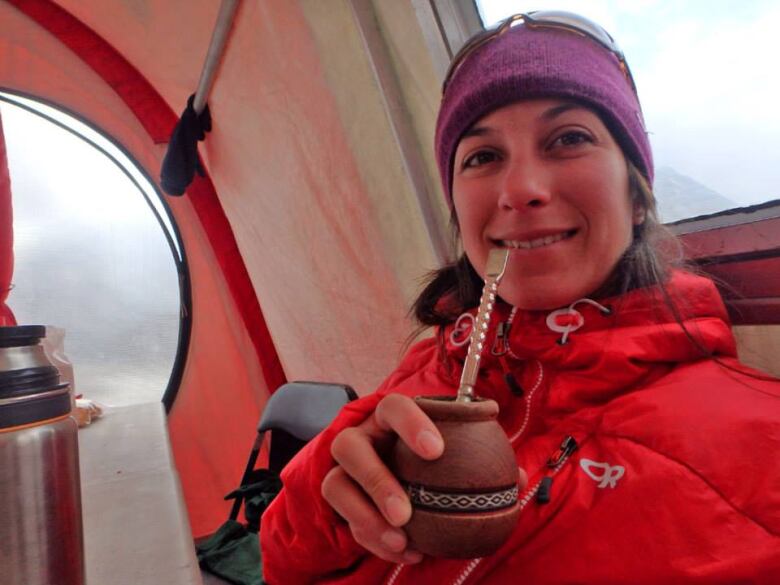Surviving Logan: rescued mountaineer tells his story a decade later
'Whoever said freezing to death is very calm, never froze to death because it is just utter terror'

The rescue of Argentine climberNataliaMartinez from MountLogan hit home for a North Vancouver man who was trapped on the same peak over 10 years ago.
In 2005, ErikBjarnasonand his team of North Shore Search and Rescue colleagues climbedto the top of Canada's highest peak, but as they were making their descent a storm threatened their lives and stranded them for three terrifying days.
- Argentine climber rescued after 4 days stranded on Yukon's Mount Logan
- Climbers flock to Canada's highest mountain for spring season
- Climbers thought they would die
"The best climbers in the world can't fight Mother Nature, she has a way of slapping you back to reality," Bjarnason told On The Coast host Stephen Quinn.
"We were prepared for everything, just like this woman was, but you can't foresee earthquakes, or we got hit by a subtropical cyclone You go to extreme places, extreme things happen."

He comparedbeing caught in the intense windstorm like being shot out of the back of an airplane. Weighing over 200 pounds himself with a 50-pound pack on his back,Bjarnasonwas whipped around like a rag doll at an altitude of over 5,000 metres.
At the height of the storm,Bjarnasonand the small crew successfully pitched a tent which protected them from the winds for about eight hours, he recalls, before things went south.
"We knew the tent wasn't going to last much longer so two of my buddies were going to go build a snow cave and I was going to boil some water because we were so dehydrated," he said.
Just as his friend stepped out, a rogue gust of wind grabbed the tent, tore it from the ice screws securing it and tossed it into the air withBjarnasoninside.
"Luckily enough that the door of the tent was open so it just kind of dumped me out, and then the tent was gone," taking their stove and his heaviest pair of gloves with it.
Ice graves
For two days, the three mountaineers laid in ice graves troughs to provide minimal protection from the wind without food or water insub-zero temperatures.
"Whoever said freezing to death is very calm, never froze to death because it is just utter terror, cold, pain, and time slows down just to torture you."
Frostbitten and severely hypothermic, they were finally rescued by Jim Hood, who Bjarnason describes as a "cowboy pilot" who flies all the air rescues on Mount McKinley in Alaska.
Because of the two days spent in a trough without proper protection on his hands,Bjarnasonlost most of his fingers on both hands and half of one thumb to frostbite, but he considers himself unscathed by the extreme ordeal.
"The loss of my fingers, it's not really that big of a deal to me because on the mountain, first I thought I'd be dead, so when I lived everything's a bonus."
No limits
After the amputation and just over a year of rehabilitation, he achieved his childhood dream of becoming a firefighter and climbed to the top of the highest peak in Europe.
"One of the doctors... said, 'you'll be amazed at how much you can do with what you have,' and he was right."
Bjarnasonhas written a book about his encounter with death called Surviving Logan,co-authored byCathiShaw.
With files from the CBC's On The Coast
To hear the full interview listen to the audio below:












_(720p).jpg)


 OFFICIAL HD MUSIC VIDEO.jpg)
.jpg)



























































































